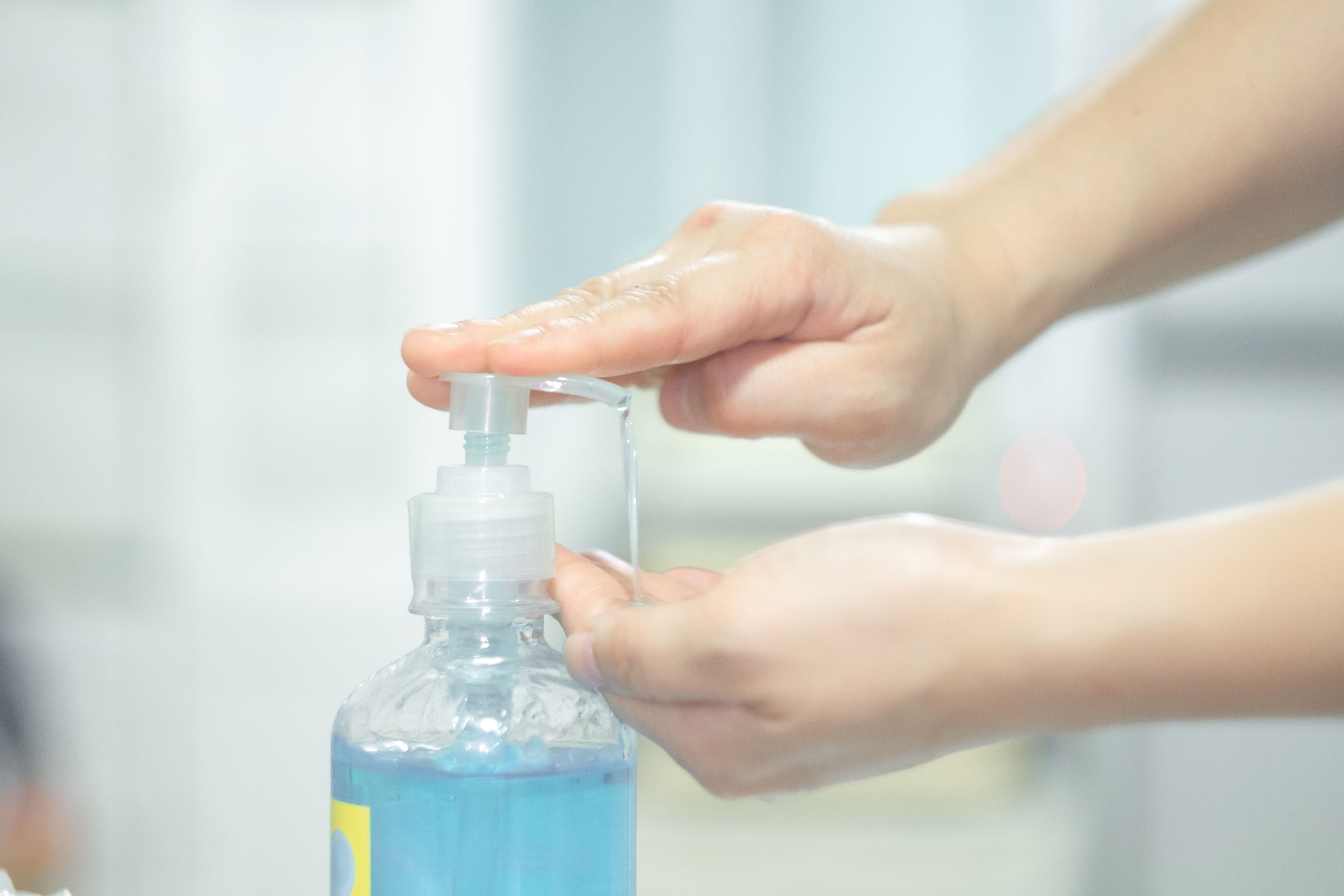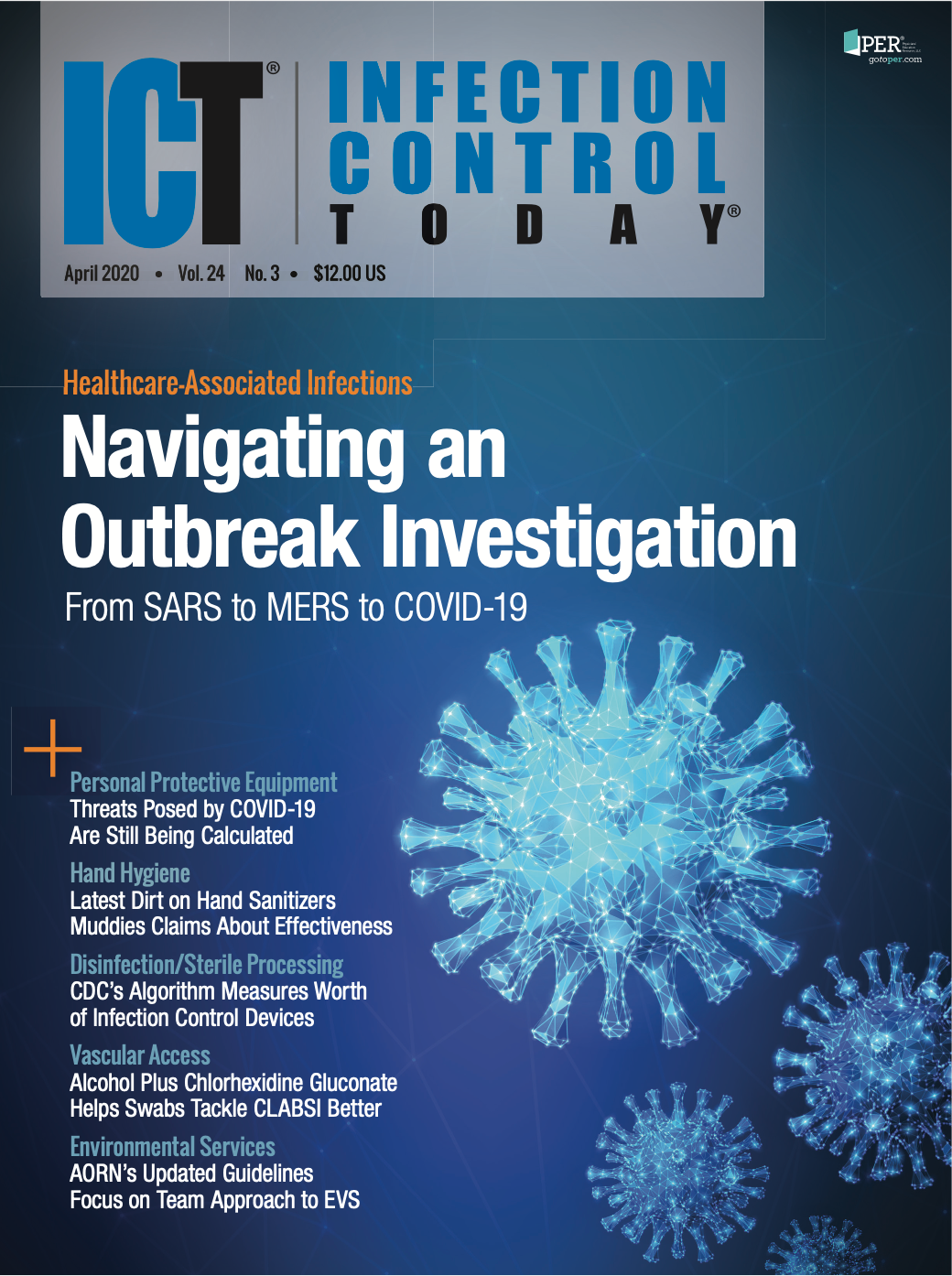New Dirt on Hand Sanitizers Muddies Claims About Effectiveness
For many infection preventionists (IPs), hand hygiene in healthcare facilities is often subpar. National compliance rates tend to fall well under 50% and even with interventions, sustainable improvement is a unicorn IPs are always in search of.

Hand hygiene is one of the most basic and important infection prevention efforts in the fight against infectious diseases, yet it is also often the most neglected. Although more recent headlines on the novel coronavirus have focused more on masks and personal protective equipment (PPE), it is imperative to remember and reiterate the role of hand hygiene and the complexities of recent research on the topic. The World Health Organization (WHO) and the Centers for Disease Control and Prevention (CDC) each consider hand hygiene to be the best way to prevent the spread of infectious diseases. Hand hygiene is considered the foundation of infection prevention.
For many infection preventionists (IPs), hand hygiene in healthcare facilities is often subpar. National compliance rates tend to fall well under 50% and even with interventions, sustainable improvement is a unicorn IPs are always in search of.1Hand hygiene compliance is tricky though, as healthcare workers are constantly going in and out of rooms, interacting with patients, and performing other activities that would necessitate hand hygiene protocols per the guidance of the World Health Organization. The development of alcohol-based hand sanitizer has relieved some of this stress by making the process faster and more efficient. Unfortunately, this is not without some exclusions, though.
One of the most important lessons IPs can teach staff is when to use hand sanitizer and when to wash with soap and water. The US Centers for Disease Control and Prevention (CDC) notes that “alcohol-based hand sanitizers can quickly reduce the number of microbes on hands in some situations, but sanitizers do not eliminate all types of germs.”2Current education holds that hand sanitizer is a great option, but washing with soap and water should be standard protocol when hands are visibly soiled/dirty or when caring for a patient with norovirus or Clostridioides difficile.
For years, the ability to rapidly clean one’s hands with sanitizer alone was truly an invention that healthcare workers and IPs alike were excited about. But some cracks in the foundation of the beloved hand sanitizer began to show in late 2019.
The limitations of hand sanitizers have been known from the beginning, but it was a new study that raised red flags about its utilization for respiratory viruses, like influenza.3Flu season has always been a time for reiterating “don’t forget to clean your hands!” so of course the finding that hand sanitizer might be less effect than handwashing against flu was deeply concerning.
The recently published study examined the infection control capabilities of alcohol-based hand sanitizers during flu season, focusing specifically on the influenza A virus.4What the research team found was fascinating, but also concerning: The hand sanitizer’s ability to inactivate the virus changed when the mucus (sputum) of an influenza A-infected person was present, meaning that the efficacy of the alcohol-based hand sanitizer decreased in the presence of sputum. The influenza A virus in mucus remained active despite 120 seconds of hand sanitizer use. When mucus is present, the virus tended to require higher sanitizer concentrations and longer periods of time to be inactivated.
These findings are significant for a number of reasons. First, it shows the limitations of hand sanitizer in an application environment previously thought to be effective. Second, it underscores how mucus and sputum can pose challenges for disinfectants, reinforcing that handwashing is often the more effective option. Handwashing with soap and water is the only effective way to remove bioburden and the “gunk” that poses challenges for truly clean hands. The physical process of scrubbing is what aids in cleaning one’s hands. Although it’s easy to focus on hand hygiene as a broad topic during respiratory virus season, this study is a good reminder that staff should be encouraged to physically wash their hands more and not rely so heavily on hand sanitizers.
Following this concerning finding, on January 17, 2020, the US Food and Drug Administration (FDA) released a warning letter to GOJO Industries regarding its Purell products.5More precisely, the Purell Healthcare Advanced Hand Sanitizer product line. A warning letter from the Division of Pharmaceutical Quality Operations is never a good thing, but especially not during an outbreak of a novel coronavirus or a severe flu season. The letter called out the company for marketing claims that the product is capable of killing a wide range of microbes. Some of these claims include efficacy against viruses like Ebola virus, norovirus, and influenza, etc. The response from the FDA was:
“These statements, made in the context of the Frequently Asked Questions section, clearly indicate your suggestion that PURELL® Healthcare Advanced Hand Sanitizers are intended for reducing or preventing disease from the Ebola virus, norovirus, and influenza. As such, the statements are evidence of your products’ intended uses. However, FDA is currently not aware of any adequate and well-controlled studies demonstrating that killing or decreasing the number of bacteria or viruses on the skin by a certain magnitude produces a corresponding clinical reduction in infection or disease caused by such bacteria or virus.”
Moreover, the FDA called out GOJO for the claims, which would designate the hand sanitizer in the “drug” category per FDA regulations. The letter heavily emphasized that the claims made by GOJO regarding the product were not supported by adequate or well-controlled clinical trials and published literature, noting that “You should take prompt action to correct the violations cited in this letter. Failure to promptly correct these violations may result in legal action without further notice, including, without limitation, seizure and injunction.”
Samantha Williams, GOJO’s senior director of corporate communications, told Infection Control Today®in Februarythat the company took “immediate action” upon receiving the FDA letter. She added that the letter was not related to the safety or quality of Purell products, or of the company’s manufacturing processes.
Overall, the efficacy of hand sanitizers has taken a hit over the past 6 months. Although this is not to say these products are not effective against microbes, it’s a stark reminder of the need for a wholistic approach to hand hygiene. It’s important to educate and reiterate with healthcare workers and all hospital employees-as well as visitors and patients-that hand sanitizers can be effective tools in specific situations, while handwashing with soap and water can be used in all situations.
Although infection prevention efforts often focus on when hand sanitizers can’tbe used, perhaps it is time to shift gears and explore when they canbe used. An effective strategy for this might be incorporating a more positive approach while reminding people that sanitizers, like any technology or medical intervention, are not be-all, end-all products. Overall, the role of hand sanitizer has always been one where explanation was required and with the recent literature and concerns from the FDA, perhaps it is time infection prevention efforts adjust how hand hygiene is communicated. Reiterating the importance of effective handwashing for all who enter a healthcare facility is critical to ensure patients safety. We all have a role in infection prevention and as research changes what can and can’t be used, it’s important that such efforts also evolve and adjust to stay relevant and effective.
Saskia v. Popescu, PhD, MPH, MA, CIC, is a hospital epidemiologist and infection preventionist. During her work as an infection preventionist, she performed surveillance for infectious diseases, preparedness, and Ebola-response practices. She holds a doctorate in biodefense from George Mason University where her research focuses on the role of infection prevention in facilitating global health security efforts. She is certified in infection control and has worked in both pediatric and adult acute care facilities.

The Guardians of Animal Health: Who Are Veterinary Infection Preventionists?
March 21st 2025Veterinary infection control experts Leslie Kollmann, BS, AAS, CVT, CIC, Denise Waiting, LVT, and Leslie Landis, LVT, BS, discuss challenges, zoonotic disease risks, and the importance of education, collaboration, and resource development in animal care facilities.
The Latest on CLABSIs and CAUTIs: Evidence-Based Approaches for Infection Prevention
February 27th 2025Health care–associated infections like CLABSIs and CAUTIs threaten patient safety. Learn evidence-based strategies, new technologies, and prevention protocols to reduce these infections and improve outcomes.
Resilience and Innovation: The Pivotal Contributions of Black Americans to Health Care and Medicine
February 24th 2025During Black History Month, we honor the resilience and contributions of Black medical professionals in health care. Despite barriers, they have led transformative changes, advocating for equitable access and medical excellence. Recognizing their impact ensures a more inclusive health care future for all.
Glove Usage Guideline: From The Joint Commission, CDC, and World Health Organization
February 17th 2025Proper glove use is crucial in health care settings to prevent infections. Guidelines from TJC, CDC, and WHO stress correct selection, usage, and disposal to minimize health care–associated infections (HAIs) and cross-contamination risks. Infection preventionists (IPs) play a key role in educating staff, enforcing compliance, and improving patient safety through standardized glove practices.